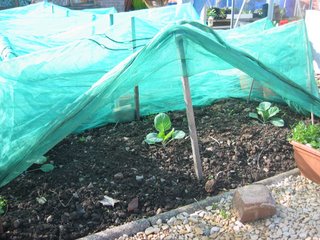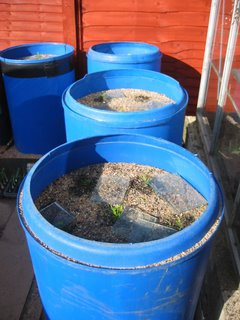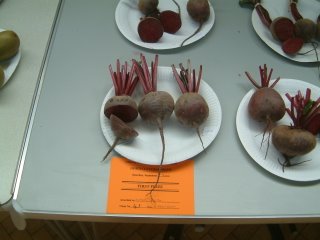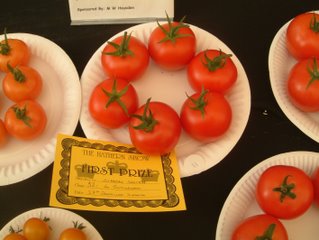
Before entering a vegetable exhibit in a Show it is important to know what a judge will be looking for. Too many people are blinded by size and will put the largest specimens into a class with no regard to other factors such as condition and uniformity. The overall quality of an exhibit should be the most important consideration to such an extent that ‘if you wouldn’t eat it don’t show it !’ Gone are the days when the biggest onions automatically won. They will if they are grown well and form a nice even set.........but your smaller ones can and should win if they are in a better condition and are more evenly matched.
The points awarded for parsnips are relevant in understanding what is required. Below are the points awarded under the guidelines of the Royal Horticultural Society and the National Vegetable Society. It is sometimes advisable to check which rules are being used for a particular Show, although for most village events it is not necessary to worry about it too much.
RHS points - Condition 6, Uniformity 5. Size and Shape 5, Colour 4, Total 20 points.
NVS points - Condition 6, Uniformity 4, Shape 4, Size 3, Colour 3. Total 20 points.
In both of the above, size is awarded relatively few points out of the total 20. With this in mind it can be seen that no-one should be put off from having a go just because they think they can’t compete with the ‘big ones’.
Parsnips are one of the '20 pointer' veg. Others are long carrots, potatoes, tomatoes, runner beans, large onions and cauliflowers. The inference is that these veg are more difficult to grow to perfection than say cucumbers (18 points), cabbages (15 points), beetroot (15 points), or 8oz onions (15 points). When a judge is comparing different types of veg in collection classes it would be very difficult, for instance, for cherry tomatoes (12 points) to beat regular size tomatoes unless the cherry toms were near perfect and the regular sized ones hadn't been grown very well, were in poor condition or were poorly matched.....but it can be done!
Presentation of the exhibit can very often make a difference. I have beaten what I would consider to be potentially superior exhibits because not enough attention was given to their preparation. This includes not washing carrots and potatoes, not taking off dead or decaying foliage and displaying an abnormally large vegetable with two other good but smaller specimens and hence losing marks for uniformity.
The pic above shows my winning onions at a recent show. The ones that come second each year are about 4 pounds each and many people struggle to understand how mine keep winning. But luckily the judge knows what he's doing (some don't) and recognises that the larger ones are poorly matched, badly ripened and unevenly weighted.
Read the schedule carefully before entering. Too often people will only put 5 tomatoes in a dish if 6 are asked for. If it asks for carrot foliage to be trimmed to no more than 3” then do so. A judge will be quite within his rights to award a NAS (Not as Schedule) card and first time exhibitors could easily be turned away from what can become a very satisfying and rewarding hobby.




















